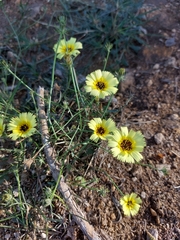Common walnut
Juglans regia
Juglans regia, commonly known as the walnut tree, is a prominent species within the Plantae kingdom, widely cultivated for its rich, nutritious nuts. In the Comunidad Valenciana, it is referred to as "Nogal" and is well appreciated for both its ecological and economic value.
Characteristics:
- Leaves: The leaves of Juglans regia are compound, with 5 to 9 leaflets, each oval-shaped and serrated on the edges.
- Bark: The bark is smooth and grayish when the tree is young, becoming furrowed and darker with age.
- Flowers: The tree is monoecious, meaning it has both male and female flowers on the same plant. The male flowers appear in catkins, while the female flowers are small and unassuming.
- Fruit: The walnut tree produces a round, green fruit that contains the edible walnut seed encased in a hard shell.
Growth and Habitat:
- Climate: Juglans regia thrives in temperate climates. It is resistant to cold but prefers sunny locations and deep, fertile soils.
- Distribution: While native to a large region stretching from the Balkans eastward to the Himalayas and southwest China, walnut trees are widely grown across Europe and the Comunidad Valenciana due to their valuable nuts and timber.
Uses and Importance:
- Nuts: The nuts are highly nutritious, rich in omega-3 fatty acids, vitamins, and minerals, making them a popular food source.
- Timber: The wood of Juglans regia is prized for furniture making, characterized by its hardness and attractive grain.
- Cultural Significance: In many cultures, including those within the Comunidad Valenciana, the walnut tree has historical importance and is often associated with wisdom and fertility.
In conclusion, the Juglans regia plays a significant role in both horticulture and natural ecosystems, providing food, habitat, and materials that support biodiversity and human industries alike.







